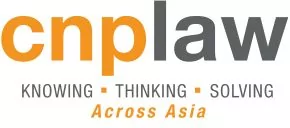A. Declaration Of Manpower Details
Businesses that may resume operations do not need to apply for an exemption but must submit a declaration of their manpower details (i.e. total number of manpower working on-site and number of manpower working shift work or part-time) via the GoBusiness portal (https://covid.gobusiness.gov.sg) within 2 weeks of resuming operations. Businesses will be required to update the manpower declaration if there are any changes to their manpower details. Businesses that fail to provide the declaration within the stipulated deadline may face a fine of up to $10,000 and/or imprisonment of up to 6 months. Subsequent offences may face a fine of up to S$20,000 and/or imprisonment of up to 12 months.
Businesses will also need to provide, inter alia, the following declarations:
- Employees are required to work on-site as they operate systems or equipment that cannot be accessed from home or are required to perform their functions on-site under the law;
- The Safe Management Measures have been implemented; and
- Safe distancing measures will be implemented for employees who are required to work at the business premises and/or other designated locations.
B. Application for General Exemption
Businesses that do not fall within the list of permitted services allowed to resume operations must apply for an exemption if they wish to conduct on-site activities. If the exemption is approved, they may operate on-site but only with the allocated manpower. An application may be submitted to request for additional manpower. If the request is rejected, no further appeals will be considered.
If the employees are permitted to work on-site, an email notification will be issued. Employees may only be deployed on-site after the email notification is received.
Businesses will also need to provide, inter alia, the following declarations:
- Employees are required to work on-site as they operate systems or equipment that cannot be accessed from home or are required to perform their functions on-site under the law;
- The Safe Management Measures have been implemented; and
- Safe distancing measures will be implemented for employees who are required to work at the business premises and/or other designated locations.
C. Safe Management Measures
Employers must ensure that the Safe Management Measures are in place, communicated and explained to employees prior to resuming on-site activities. Signs should also be put up to remind employees and visitors to observe the Safe Management Measures.
The Safe Management Measures, which aim to ensure that employers take care of their employees, the workplace and unwell employees and visitors at the workplace, can be summarized into the following key requirements:
- Implementation of Safe Management Measures
- Employees who can work from home must continue to do so
- Reduce physical interaction and ensure safe distancing
- Wear masks and observe good personal hygiene
- Support contract tracing
- Keep workplaces clean
- Implement health checks and protocols
Implementation of Safe Management Measures
Employers must establish a system to implement the Safe Management Measures in a sustainable manner for as long as may be necessary. This includes implementing a detailed monitoring plan to ensure that employees comply with the Safe Management Measures and that there is timely resolution of any non-compliance issues and efforts to mitigate the risks of COVID-19 outbreaks.
Employers must also appoint at least one Safe Management Officer (the "SMO"), who will assist in the implementation, coordination and monitoring of the Safe Management Measures at the workplace. The duties of the SMO include:
- Coordinating the implementation of the Safe Management Measures, including identifying relevant risks, recommending and assisting in implementing measures to mitigate the risks, and communicating the measures to all employees in the workplace;
- Conducting inspections and checks to ensure compliance with the Safe Management Measures at all times. Any non-compliance identified should be reported and documented;
- Remedying any non-compliance through immediate action; and
- Keeping records of inspections, checks and correction actions, which should be made available upon request by a government inspector.
Default Mode of Working: Actively enable employees to work from home
Employees who have been working from home must continue to do so and will only be allowed to work on-site if there is no alternative to working from home. Employers should review work processes for employees who are unable to work from home, and provide the necessary equipment and adopt solutions that will enable such employees to work remotely.
As far as possible, physical meetings should be minimised in favour of virtual meetings. All events or activities that involve close and prolonged contact should be cancelled or deferred.
Employees should also pay special attention to vulnerable employees such as older employees, pregnant employees and employees who have underlying medical conditions. It may be that these employees would have to be deployed to another role within the company.
Reduce physical interaction and ensure safe distancing
Employers are required to stagger work and break hours to reduce possible congregation of employees. Staggered work hours must be implemented over at least three 1-hourly blocks, with no more than half of the number of employees reporting to work within each block. Work hours should also enable employees to avoid peak-hour travel. If staggering work and break hours are not feasible due to operational reasons, employers must implement other measures such as arranging for different groups of employees to arrive at and depart from the workplace through different entrances and exits.
Employers are required to split employees at the workplace into teams, with each team working only at one worksite. Employees should not work in more than one team or worksite. If this is not possible, systems have to be in place to ensure that there is no direct contact or cross-deployment between employees in different teams. Employers should also step up the cleaning of common areas during shift or split team changeovers.
Employers must ensure that employees do not socialize or congregate in groups at the workplace. Employees should be instructed to have meals or breaks alone. All social gatherings both at and outside the workplace must be cancelled or deferred. In order to ensure effective compliance with the Safe Management Measures, employers may have to consider sending regular reminders to employees to not socialize or congregate in groups and that this will apply both at and outside the workplace.
Employers must ensure clear physical spacing of at least 1 metre between employees and visitors at the workplace at all times through the following measures:
- Safe physical distances at the workplace and common spaces must be clearly demarcated with visual indicator or through physical means such as barriers between workstations and meeting room seats;
- The number of attendees at physical meetings should be limited and the duration of the meetings should be shortened; and
- Employers should require their suppliers or contractors to implement similar safe distancing measures. Transactions with suppliers or contractors should be kept as short as possible and in a staggered manner.
Wear masks and observe good personal hygiene
Employers must ensure that all employees and visitors at the workplace wear a mask and other necessary protective equipment at all times while at the workplace, unless they are participating in activities that will require the removal of face masks. To achieve this, employers:
- must ensure that there are sufficient masks for all employees; and
- should consider improving the work environment to enable employees to wear masks; and
- should encourage employees to observe good personal hygiene to prevent the transmission of COVID-19 – this would include regular washing of hands and reminders to employees to refrain from touching their faces.
Support contract tracing
Employers must use the SafeEntry visitor management system to record the entry and exit of all employees and visitors at the workplace. Before entering the workplace, employees and visitors are required to declare, via the SafeEntry software application or other means, that they:
- are currently not under a quarantine order or stay-home notice;
- have not had close contact with a confirmed COVID-19 case in the past 14 days; and
- do not have any fever or flu-like symptoms.
Employers should also encourage employees to download and activate the TraceTogether software application.
Keep workplaces clean
Employers are required to comply with the sanitation and hygiene advisories disseminated by the National Environmental Agency ("NEA"), which states, inter alia, that employers are required to implement good practices in relation to their employees' personal hygiene, housekeeping of workplaces, toilets and pest control.
Employers must ensure regular cleaning of common spaces. Machinery and equipment must be cleaned and disinfected before they are shared with employees in different shifts or teams.
Employers must also provide cleaning and disinfecting agents at all toilets, hand-wash stations, human traffic stoppage points (e.g. entrances, reception areas, security booths and lift lobbies), meeting rooms and other common areas (e.g. pantries or canteens).
Implement health checks and protocols
Employers must ensure regular checks (i.e. twice daily) for temperature and respiratory symptoms for all employees and visitors at the workplace. Employees and visitors who are unwell should be refused entry to the workplace.
Employees who have visited a clinic must submit records of their medical certificates and diagnoses if they have COVID-19 related symptoms, and if they were tested for COVID-19, the results of their tests. Employees on medical leave should be required to closely monitor their health before returning to the workplace and their close contacts at the workplace should monitor their health more regularly.
Employees who are feeling unwell or showing symptoms of illness should leave the workplace and consult a doctor immediately. Employers must track and record these cases, and ensure that each employee visits only one clinic for check-ups or informs the clinic of all recent doctor visits in the past 14 days for COVID-19 related symptoms. In the event of a confirmed case, employers must:
- immediately vacate and cordon-off the immediate section of the workplace premises where the confirmed case worked; and
- carry out a thorough cleaning and disinfecting all relevant on-site areas and assets that were exposed to the confirmed case, in accordance with NEA guidelines.
D. Moving forward
It is likely that the Safe Management Measures will continue to be implemented, as Singapore's economy gradually opens up in phases 2 and 3 of its exit from the Circuit Breaker. The Safe Management Measures will be periodically updated by MOM, NTUC and SNEF to take into account further medical advice, technological updates and operational practices. While some measures may appear onerous and impede business operations, employers will be expected to do their part to provide safe working environments as the nation adapts to the COVID-19 situation. Employers should bear in mind that regular checks will be conducted by the authorities. Breaches of the Safe Management Measures or poor practices may also be reported via SnapSAFE, a software application that allows for the reporting of workplace safety and health issues to MOM. As such, effective compliance with the Safe Management Measures is needed to sustain continued business operations.
This update is provided to you for general information and should not be relied upon as legal advice.


